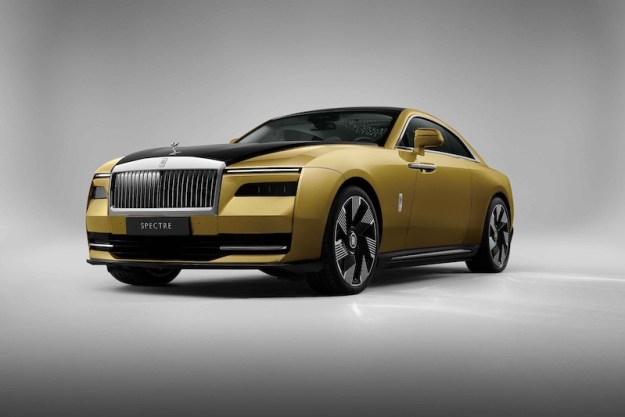Do you have a car that sits around most of the time, and a desire to make extra money?
Instead of driving people or goods around with ridesharing and delivery services, you can earn a little bit more by renting your vehicle out to others. You can make money by doing very little. In the past, this wasn’t an option, but now almost anyone can do it thanks to numerous applications you can download on your smartphone. Registering through the company’s website first is sometimes required but everything else is done through the app.
The type of app you need to rent out your car is called a peer-to-peer platform. These apps let people in your area rent your vehicle by reaching out to you directly instead of the traditional way (through a rental company). You can even do the whole transaction without meeting the person renting your vehicle if you’d prefer. Almost everything is done on the apps, which are usually user-friendly with step-by-step instructions.
So, what are you waiting for? Keep reading and turn your car into money.
Turo

Turo is easily one of the most popular peer-to-peer car-sharing apps. The company has been operating nationwide for years and claims it’s the word’s largest car-sharing marketplace. It’s free to list on Turo and you set your own price and rules like mileage restrictions. Also, like most peer-to-peer car-sharing services, your car can be picked up by the person renting wherever you choose — whether that’s in your driveway or in the library parking lot.
Turo screens all drivers before they start renting and reviews can be left for both the owner and the renter. A couple of drawbacks include not being able to rent hourly and the popular feature that allows renters to locate and unlock your car with the app is optional (it requires the Turo Go hardware installation) and only available in certain cities. Without Turo Go, owners will have to meet the renters to hand off the keys unless a key box is used.
Like all car-sharing apps, there are requirements your car must meet in order to get listed on Turo. For example, your vehicle must be no more than 12 years old (unless its a specialty or classic car), have fewer than 130,000 miles, and must have a clean title. Also, certain vehicles like motorcycles, RVs, and vehicles that seat more than eight cannot be rented on Turo. The full list of requirements is listed on Turo’s website.
Cost: Free to list. The optional Turo Go hardware installation is $190 and currently has no subscription fee.
Percentage earned: You keep 65-85% of the rental cost (depends on the vehicle protection plan you choose).
Availability: Nationwide.
Insurance: $1 million in liability and damage protection plans.
How much can you make: Turo claims owners average $706 a month.
Who will rent my car: Anyone but rideshare drivers.
Hardware installation: Optional.
Getaround

Like Turo, Getaround is a peer-to-peer car-sharing app, but unlike Turo, it allows users to rent by the hour. Although, one huge drawback is that the app isn’t available nationwide. If you live in one of the listed cities and decide to rent with Getaround, you are required to install the Getaround Connect hardware. This is a popular feature that allows renters to locate and unlock your car, so there’s no need to meet them.
The app sets the price of your rental for you using an algorithm the company developed. Getaround claims this method will maximize your earnings but you can also set the price. Potential renters are screened by Getaround’s system, giving owners more peace of mind.
Vehicle requirements to rent are similar to Turo’s. Your vehicle must be a 2010 model year or newer, have fewer than 125,000 miles, and have eight seats or fewer. Also, not any type of vehicle can be listed; it must be a private passenger vehicle with at least four wheels. Getaround’s website has the full list of requirements.
Cost: Free for 90 days then a subscription fee of $20 is charged monthly. A one-time payment of $99 is also required for the hardware installation.
Percentage earned: You keep 60% of the rental cost.
Availability: In over 100 cities (mostly California, Massachusetts, and New Jersey).
Insurance: $1 million in liability and damage protection plans.
How much can you make: Getaround claims renters can earn on average thousands per year.
Who can rent my car: Anyone including Uber drivers (but not Lyft).
Hardware installation: Required.
HyreCar

HyreCar is also a peer-to-peer car-sharing app but with a catch: Only local Uber and Lyft rideshare and delivery service drivers (like DoorDash and Postmates) can rent through the app. That means your car can be used for ridesharing and/or food and package delivery. It’s free to create a listing and you can set your rate but the car must be inspected and approved by Uber and Lyft first.
No hardware for locating and unlocking the vehicle with the app is offered, so owners will likely have to meet the renters. Like the other apps, renters are screened before they can rent through the app. Since HyreCar vehicles have to be approved and inspected by Lyft and Uber, vehicle requirements are dictated by those companies and listed on their websites.
Cost: Free.
Percentage earned: You keep 85% of the rental cost.
Availability: Nationwide.
Insurance: $300,000 in liability and damage protection plans.
How much can you make: HyreCar claims renters can earn $1,200 a month.
Who can rent my car: Rideshare, food delivery, and package delivery drivers.
Hardware installation: Not offered.
Editors' Recommendations
- Your car insurance company knows more about you than you think
- How to add Bluetooth to an older car
- Your next car could have TiVo built-in
- How much does an electric car battery cost?
- How to charge your electric car at home



